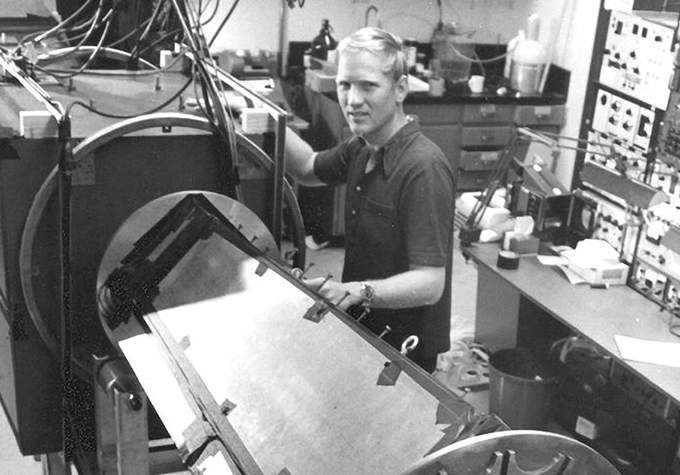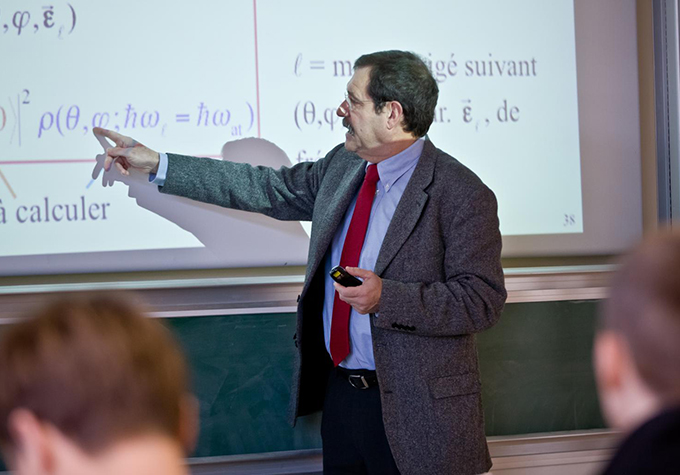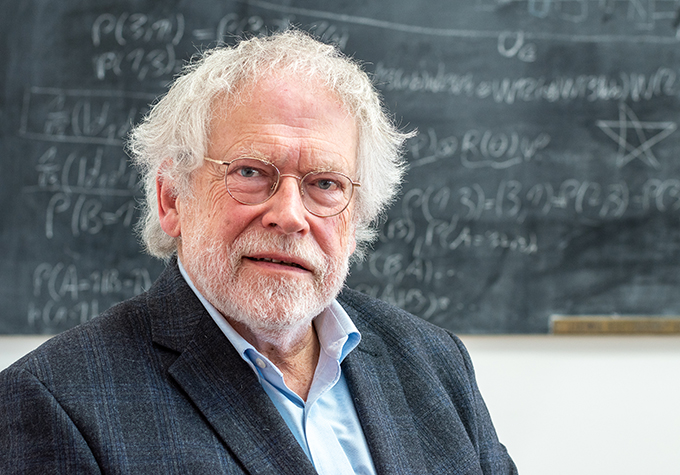This post was originally published on this site
Tests of quantum weirdness and its potential real-world applications have been recognized with the 2022 Nobel Prize in physics.
At some level we are all subject to quantum rules that even Albert Einstein struggled to come to terms with. For the most part, these rules play out behind the scenes in transistors that make up computer chips, lasers and even in the chemistry of atoms and molecules in materials all around us. Applications that stem from this year’s Nobel prize take advantage of quantum features at larger scales. They include absolutely secure communications and quantum computers that may eventually solve problems that no conceivable conventional computer could complete in the lifetime of the universe.
This year’s prize is shared among three physicists. Alain Aspect and John Clauser confirmed that the rules of quantum mechanics, as weird and difficult to believe as they are, really do rule the world, while Anton Zeilinger has taken advantage of strange quantum behavior to develop rudimentary applications that no conventional technology can match. Each laureate will take home a third of the prize money, which totals 10 million Swedish kronor, roughly $915,000.
“Today, we honor three physicists whose pioneering experiments showed us that the strange world of entanglement … is not just the micro-world of atoms, and certainly not the virtual world of science fiction or mysticism, but it’s the real world that we all live in,” said Thors Hans Hansson, a member of the Nobel Committee for Physics, at a press conference announcing the award on October 4 at the Royal Swedish Academy of Sciences (SN: 11/5/10).
“It was certainly very exciting to learn about the three laureates,” says physicist Jerry Chow of IBM Quantum in Yorktown Heights, N.Y. “Aspect, Zeilinger and Clauser — they’re all very, very well known in our quantum community, and their work is something that’s really been a big part of many people’s research efforts over many years.”
Aspect, of the Université Paris-Saclay and École Polytechnique in France, and Clauser, who now runs a company in California, showed that there are no secret back channels of communication that explain how two particles can exist as a single entity, even though they are far apart (SN: 12/29/14).
The experiments of Zeilinger, of the University of Vienna, that rely on that quantum behavior include demonstrations of communications, absolutely secure encryption and components crucial for quantum computers. He pioneered another, widely misunderstood, application — quantum teleportation. Unlike the teleportation of people and objects in science fiction, the effect involves the perfect transmission of information about a quantum object from one place to another.

“I was always interested in quantum mechanics from the very first moments when I read about it,” Zeilinger said via phone at the news conference announcing the award. “I was actually struck by some of the theoretical predictions, because they did not fit the usual intuitions which one might have.”
The discovery of quantum behavior that rules the world at small scales, like the motion of an electron around an atom, revolutionized physics at the beginning of the 20th century. Many leading scientists, most famously including Einstein, acknowledged that quantum theories worked, but argued that they couldn’t be the true description of the world because they involved, at best, calculating the probabilities that something would happen (SN: 1/12/22). To Einstein, this meant that there was some hidden information that experiments were too crude to uncover.
Others believed that quantum behavior, derogatively called weirdness, though difficult to understand, had no secret ways of transmitting information. It was largely a matter of opinion and debate until physicist John Bell proposed a test in the 1960s to prove that there were no hidden channels of communication among quantum objects (SN: 12/29/14). At the time it wasn’t clear that an experiment to perform the test was possible.

Clauser was the first to develop a practical experiment to confirm Bell’s test, although there remained loopholes his experiment couldn’t check that left room for doubt. (His interest in science developed early. In 1959 and 1960, Clauser competed in the National Science Fair, now known as the International Science and Engineering Fair (SN: 5/23/59). The fair is run by the Society for Science, which publishes Science News.)
Aspect took the idea further to eliminate any chance that quantum mechanics had some hidden underpinnings of classical physics (SN: 1/11/86). The experiments of Clauser and Aspect involved creating pairs of photons that were entangled, meaning that they were essentially a single object. As the photons moved in different directions, they remained entangled. That is, they continue to exist as a single, extended object. Measuring the characteristics of one instantly reveals characteristics of the other, no matter how far apart they may be.
Entanglement is a delicate state of affairs and is difficult to maintain, but the results of the experiments of Clauser and Aspect show that quantum effects cannot be explained with any hidden variables that would be signs of non-quantum underpinnings.

To Chow, the significance of this research is twofold. “There’s really an element of showing, from a philosophical point, that quantum mechanics is real,” he says. “But then, from the more practical standpoint … this same beautiful theory of quantum mechanics gives a different set of rules by which information is processed.” That, in turn, opens up new avenues for next-generation technologies like quantum computers and communications (SN: 12/3/20).
Zeilinger’s experiments take advantage of entanglement to achieve feats that would not be possible without the effects that Clauser and Aspect confirmed. He has extended the experiments from the lab to intercontinental distances, opening up the possibility that entanglement can be put to practical use (SN: 5/31/12). Because interacting with one of a pair of entangled particles affects the other, they can become key components in secure communications and encryption. An outsider trying to listen in on a quantum communique would be instantly revealed because they would break the entanglement as they snooped.
Quantum computers that rely on entangled particles have also become a topic of active research. Instead of the ones and zeros of conventional computers, quantum computers encode information and perform calculations that are blends of both one and zero. In theory, they can perform some calculations that no digital computer could ever match. Zeilinger’s quantum teleportation experiments offer a route to transfer the information that such quantum computers rely on (SN: 1/17/98).
“This [award] is a very nice and positive surprise to me,” says Nicolas Gisin, a physicist at the University of Geneva in Switzerland. “This prize is very well-deserved, but comes a bit late. Most of that work was done in the [1970s and 1980s], but the Nobel Committee was very slow, and now is rushing after the boom of quantum technologies.”
That boom is happening on a global scale, Gisin says. “In the U.S. and in Europe and in China, billions — literally billions of dollars are poured into this field. So, it’s changing completely,” he says. “Instead of having a few individuals pioneering the field, now we have really huge crowds of physicists and engineers that work together.”
Although some of the most esoteric quantum applications are in their infancy, the experiments of Clauser, Aspect and Zeilinger bring quantum mechanics, and its strange implications, to the macroscopic world. Their contributions validate some of the key, once controversial ideas of quantum mechanics and promise novel applications that may someday be commonplace in daily life, in ways that even Einstein couldn’t deny.
Maria Temming contributed reporting to this story.
